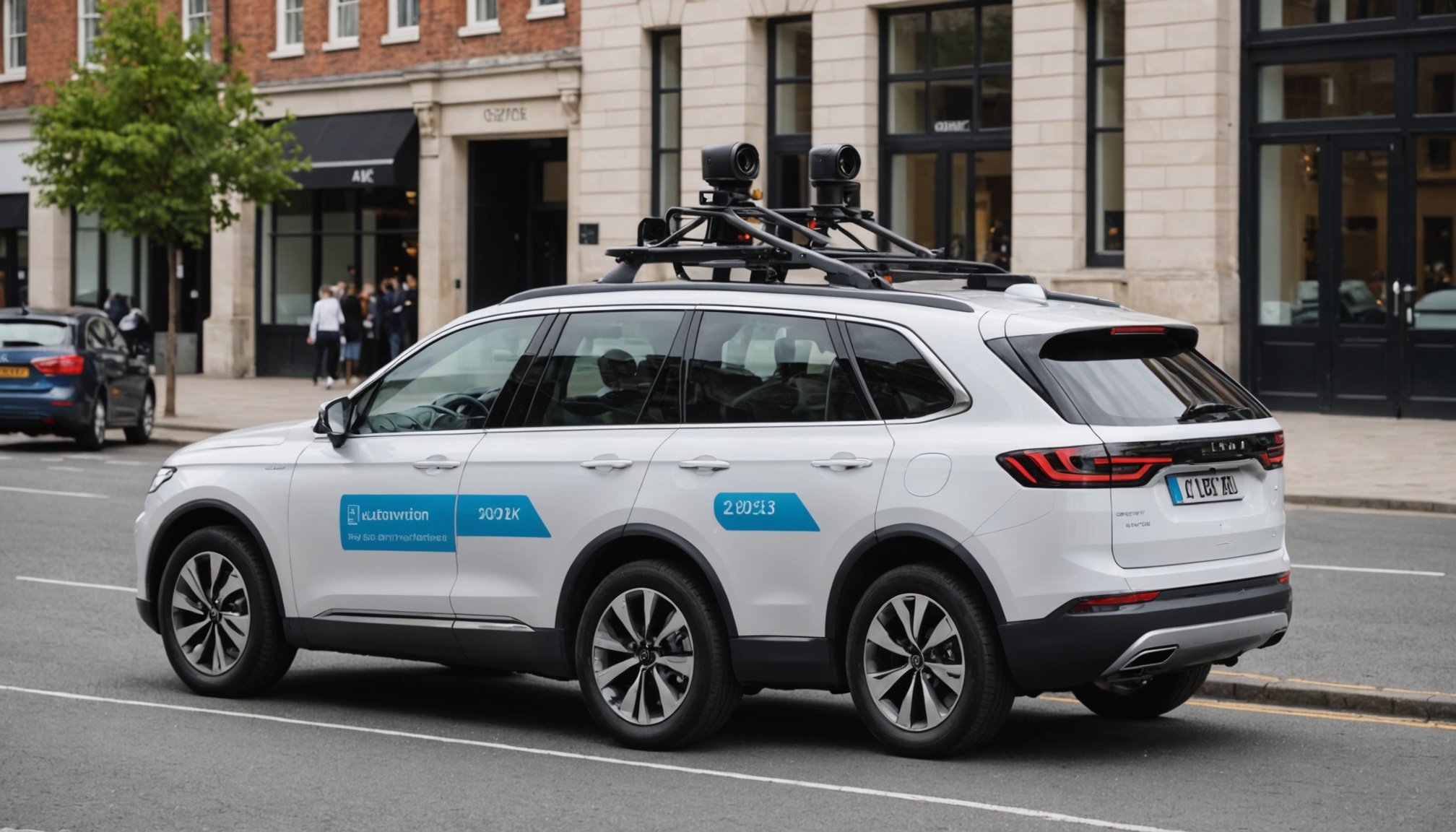Overview of 2023 UK Self-Driving Car Regulations
The 2023 UK self-driving car regulations are a significant evolution in the legal landscape, aiming to integrate advanced technology into everyday transport while ensuring public safety. Historically, the UK has been a pioneer in adopting autonomous vehicle laws, with initial discussions dating back to the early 2000s. However, the landscape has transformed dramatically due to technological advancements and growing public interest.
Historical Context
The UK’s journey towards a robust regulatory framework began with exploratory trials and proposals focusing on safety and technology feasibility. Over the years, legislative bodies have worked to establish comprehensive guidelines, balancing innovation with everyday safety.
Also read : Exploring Legally Permissible Motorcycle Modifications in the UK: A Comprehensive Guide
Key Components of the Regulatory Framework
The current framework is composed of several critical elements:
- Licensing for technology providers to ensure only safe systems operate on public roads.
- Liability laws clarifying accountability in the event of accidents involving autonomous vehicles.
- Data privacy measures protecting user information, crucial as vehicles become increasingly connected.
Importance of Regulations
The importance of these regulations cannot be overstated. They safeguard public safety by setting strict standards for technology providers. Moreover, these laws are pivotal for encouraging technology advancement, as they stimulate innovation within a safe, controlled environment. With a clear regulatory framework, the UK aims to be at the forefront of autonomous vehicle integration.
In parallel : Essential Navigation System Features UK Drivers Need for Seamless Urban Commuting
Key Regulations and Legal Requirements
Navigating the legal requirements for self-driving vehicles is a complex task, especially as these vehicles become more prevalent. In the UK, transport laws are evolving to accommodate these innovations. As of now, self-driving cars must comply with specific regulations that ensure safety and efficacy on the roads. These regulations cover various aspects, including vehicle design, data security, and operational protocols.
Manufacturers are required to adhere to detailed compliance protocols. This includes ensuring that vehicles can reliably operate without human intervention and meet stringent safety measures. Additionally, manufacturers must conduct extensive testing to prove their systems can safely integrate into existing traffic environments.
An essential part of UK transport law involves the impact of these standards on vehicle testing and deployment. Testing protocols are comprehensive, requiring controlled environments prior to real-world applications. This phased approach seeks to mitigate risks and ensures that self-driving vehicles are only deployed after rigorous validation.
Understanding these regulations is crucial for companies aiming to innovate, ensuring they remain compliant while pushing the boundaries of what self-driving technology can achieve. The landscape of autonomous vehicles is rapidly changing, dictating a need for continuous adaptation to legal developments.
Safety Standards for Autonomous Vehicles
Ensuring safety standards is paramount as autonomous vehicles integrate into daily life. Extensive measures are established to oversee the safety and functionality of self-driving cars. These autonomous vehicle safety protocols aim to safeguard passengers, pedestrians, and other road users.
Before any autonomous vehicle hits the market, it undergoes rigorous testing protocols. These protocols are crucial in uncovering potential faults or vulnerabilities. Testing usually involves a series of simulations, real-world trials, and performance evaluations, which mirror a variety of driving conditions and scenarios.
Also significant is the role of third-party safety assessments. Independent organisations conduct unbiased evaluations, which are instrumental in the regulatory decision-making process. These assessments verify the vehicle’s compliance with established safety standards, ensuring public trust in autonomous technology.
Key aspects include:
- Reliability in diverse environments and weather conditions
- Safe interaction with pedestrians and cyclists
- Effective response to unexpected road events
The stringent safety standards and testing protocols lay the foundation for safer roads, accentuating the importance of meticulous evaluation in the development of autonomous vehicles. Regular updates to safety measures ensure they keep pace with technological advancements, providing continued safety assurances.
Recent Changes to UK Self-Driving Laws
In the UK, recent legislative updates in the realm of self-driving cars have been significant. The primary focus of these changes is aligning current regulatory frameworks with the innovative stride of autonomous vehicle technology. This shift includes modifying existing laws to better accommodate self-driving cars and their safe integration on public roads.
Manufacturers face new responsibilities under these recent laws. They must ensure that autonomous vehicles adhere to standards that address new safety protocols and data security measures. This is pivotal in fostering a trustworthy environment for both consumers and stakeholders involved in the automotive industry.
For consumers, the legislative updates mean greater access to cutting-edge technology, albeit with the reassurance of government oversight ensuring safety and reliability. The reformed laws aim to bolster public confidence as autonomous vehicles gradually become commonplace on UK roads.
On a broader scale, the government has demonstrated its commitment by initiating projects and public consultations to further smooth the integration of self-driving technology into daily life. These initiatives underscore a dedication to embracing innovation while maintaining safety and public interest at heart. Through keen legislation and active policy reform, the UK continues to stride forward in autonomous vehicle policy.
Implications for Manufacturers and Consumers
Understanding the manufacturers’ responsibilities is crucial as regulations evolve in the self-driving car industry. With new regulations, manufacturers must ensure that their autonomous vehicles meet stringent safety and reliability standards. They are obligated to provide regular software updates, comprehensive user manuals, and support to maintain vehicle performance. Vehicle ownership now carries implications related to product recalls, which manufacturers must address promptly to avoid legal repercussions.
For consumers, knowing their rights within this market is equally important. Consumers have the right to expect safety, transparency, and data privacy from their autonomous vehicles. They also have the right to access clear information on vehicle limitations and capabilities. Consumer rights extend to seeking compensation in cases of vehicle malfunction or accidents resulting from manufacturer negligence.
Owning an autonomous vehicle comes with unique obligations, such as understanding the guidelines for responsible operation. Before activating autonomous mode, consumers should become familiar with vehicle features and always remain alert to take control if needed. Responsible ownership means abiding by local traffic laws and ensuring the vehicle is regularly serviced. As technology advances, both manufacturers and consumers must adapt to foster a safe and efficient environment for autonomous transportation.
Practical Advice for Understanding Self-Driving Technology
Understanding self-driving technology begins with grasping several key elements critical for every consumer. First, it’s important to know the different levels of automation, from level 0 (no automation) to level 5 (full automation). Knowing these helps in setting appropriate expectations.
Essential Information and Safe Operation
One crucial part of consumer education is familiarizing yourself with the features of your vehicle. Operational guidelines are often provided by manufacturers and include detailed instructions on when and how features like adaptive cruise control or lane-keeping systems can be safely utilised. Always remain aware: even with self-driving technology, you should stay attentive and ready to take control.
Resources for Ongoing Education
There are numerous resources available for ongoing education about autonomous driving. Government transportation websites and vehicle manufacturers often offer updated guidelines and news regarding self-driving capabilities. Engaging with these platforms can increase your awareness and understanding, ensuring that you stay informed as technology evolves.
By following these practical tips and seeking out reliable consumer education resources, you can enhance your understanding of self-driving vehicles and safely enjoy their benefits. Whether you’re a passenger or a potential buyer, being informed ensures a safer and more satisfying experience with this advanced technology.
Potential Legal Issues and Government Guidelines
Navigating the legal issues surrounding self-driving cars is crucial as their presence on roads increases. One primary concern is determining liability in the unfortunate event of an accident. Traditionally, the driver is accountable, but with autonomous vehicles, this responsibility may shift. This shift could involve manufacturers, software developers, or even the vehicle itself, raising complex questions and potential legal challenges.
Government guidelines play a significant role in addressing these intricacies. Various jurisdictions are developing frameworks to handle issues like liability, ensuring that both vehicle owners and manufacturers are aware of their responsibilities. This includes adapting existing traffic laws to accommodate autonomous technology and introducing new guidelines specifically for self-driving cars.
Moreover, these guidelines aim to mitigate legal uncertainties by establishing clear standards for vehicle operation and safety requirements. These measures help all parties involved understand their roles and responsibilities, fostering a smoother integration of autonomous vehicles into public use. As technology evolves, continuous updates to these government guidelines will be essential to address emerging legal challenges effectively. Understanding the intersection of law and technology is vital as self-driving cars become a reality on our roads.
Future Outlook for Autonomous Vehicles in the UK
The future regulations in the UK regarding autonomous vehicles are expected to evolve to accommodate the rapid pace of autonomous vehicle developments. Industry experts predict tailored regulatory frameworks will emerge, prioritising safety and data standards. This shift is crucial, as it governs how self-driving technology is integrated across private and public sectors.
Industry trends indicate an increasing shift towards collaboration between tech companies and traditional automotive manufacturers. This partnership aims to innovate and refine autonomous features. Moreover, the development of infrastructure that can support self-driving cars, such as smart roads, is likely to influence these trends.
The long-term vision for self-driving cars encompasses a future of reduced traffic congestion and lower emissions. However, public acceptance remains a hurdle. The societal integration of autonomous vehicles relies heavily on public trust in their safety and reliability. Efforts to increase familiarity and transparency about self-driving technology are essential to gaining public confidence.
As these advances continue, stakeholders actively monitor global industry and legislative changes to ensure the UK remains at the forefront of autonomous vehicle technology. Through strategic planning and innovation, the future of autonomous vehicles in the UK appears promising.











